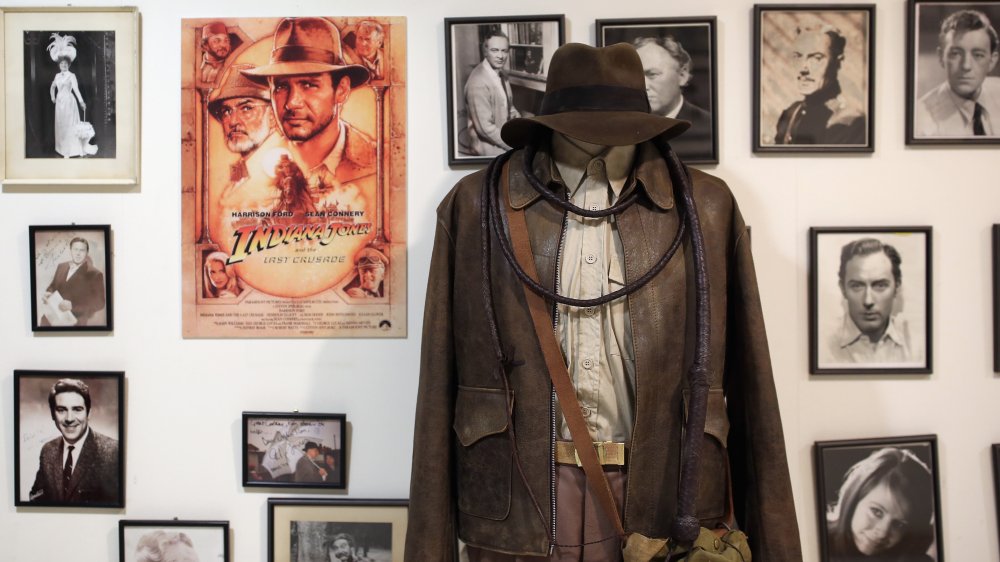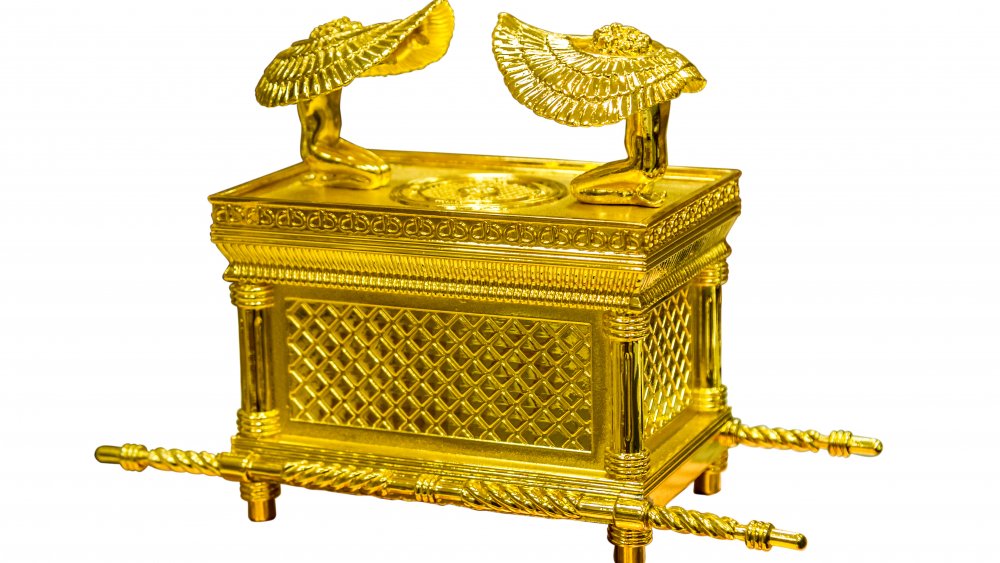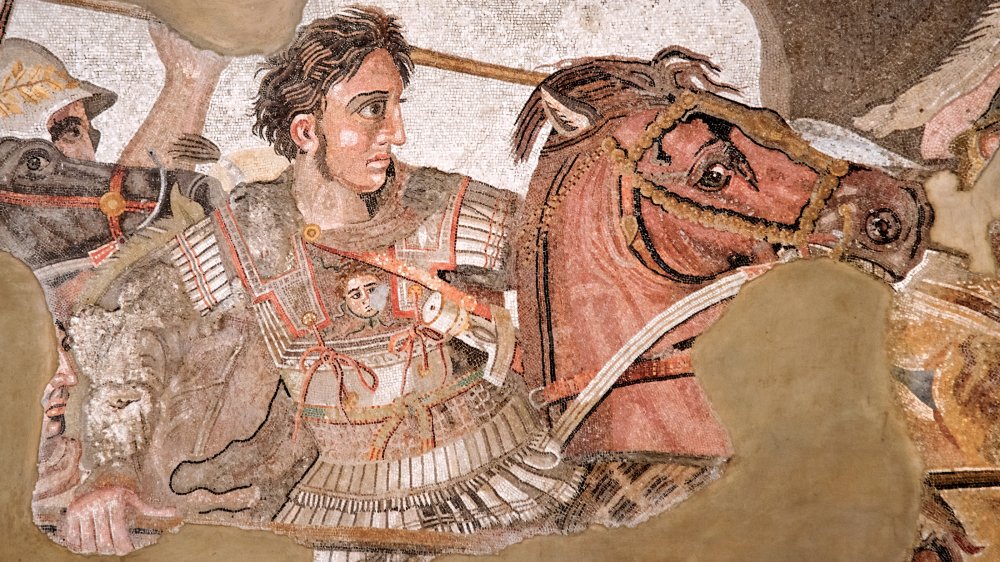The Link Between The Ark Of The Covenant And Alexander The Great
Thanks to the 1981 film Raiders of the Lost Ark, the Ark of the Covenant is one of the celebrities of holy artifacts. With actor Harrison Ford as Indiana Jones fighting Nazi's for the legendary chest, it got some high-profile media attention for what is essentially a big box. (Seriously: According to the Online Etymology Dictionary, "ark" derives from the Latin word arca, or "big box.") Besides being featured in tent-pole movies, though, the Ark is linked to other big names, such as the famous military leader Alexander the Great.
But more on that later. First, let's talk about this oversized box. The Ark of the Covenant, also known as the Ark of the Testimony, held relics for the Israeli people and acted as a mobile sanctuary while they wandered the desert after the Egyptian Pharaoh released them from slavery. The Ark of the Covenant was positioned in front of the group, essentially leading the way as the Israelis walked. It also held mystical powers. "During the crossing of the Jordan the river grew dry as soon as the feet of the priests carrying the Ark touched its waters, and remained so until the priests, with the Ark, left the river, after the people had passed over," says the Jewish Encyclopedia.
What's inside the Ark of the Covenant?
No one could touch or look at the Ark of the Covenant, which had skins and cloths wrapped around it. It sat on poles so it never touched the ground. Priests could transport it without their hands skimming its surface.
When Moses received the Ten Commandments on Mount Sinai from God, it is told in Chapter 25 of the Old Testament's Book of Exodus that he received specific instructions about building the Ark of the Covenant, including the type of wood (acacia), the dimensions (about 4.5 feet by 2.5 feet by 2.5 feet) and its decorations (lots of gold and rings of gold in which to place the carrying rods). Are you wondering what was inside? The answer depends on your source. The Hebrew Bible says that within the Ark were the stone tablets of the Ten Commandments and lots of manna, which was the food the Israelites ate during their long desert trek. Biblegateway reports that according to the Book of Numbers, the staff of Aaron, the brother of Moses, also made the cut.
Eventually, the Israelites stopped their wanderings and the Ark was lost. The Hebrew Bible mentions it from Moses through the stories of King David and Solomon and the Divided Kingdom. Then as tales of the prophet Jeremiah are told, the Ark of the Covenant is no longer spoken about again.
Alexander the Great and the Ark: A Mystery
So where did the Ark of the Covenant go? How could a fairly large-sized box covered in gold be lost? Here's where Alexander the Great comes in. Rumors, according to the Huffington Post in 2011, assert that the Ark was found in the Tomb of Alexander the Great on the Greek island of Thasos. The military monolith died in 323 BC after he conquered Persia. Bulgaria's Focus Information Agency, the source of the story, was considered sketchy, especially since the site where Alexander was buried isn't known. Oh, and that unreliable media outlet got their story from the Russian website Grekomania. Sounds a bit fake, right?
As posted at Lexundria, the First Century CE Jewish historian Flavius Josephus recounted that Alexander journeyed to Jerusalem, where he saw a prophecy in the Book of Daniel about a Greek leader defeating the Persians — something Alexander was probably happy to hear. So while there's no proof he took the Ark as a souvenir, he did visit the area. Maybe more investigating is in order.


